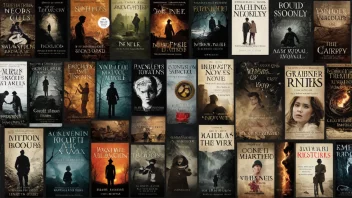In the realm of young adult literature, plot twists serve as a powerful narrative tool that captivates readers and enhances the storytelling experience. These unexpected turns not only surprise the audience but also challenge their perceptions and encourage deeper engagement with the characters and themes. Understanding the significance of plot twists in YA storytelling can illuminate why they resonate so strongly with today’s youth.
One of the primary reasons plot twists are integral to young adult novels is their ability to mirror the tumultuous nature of adolescence. During this formative period, young readers often grapple with identity, relationships, and unexpected challenges. Plot twists can reflect the unpredictability of teenage life, making stories relatable and engaging. For instance, a character discovering a hidden family secret can parallel a teen's own journey of self-discovery, creating a profound connection between the reader and the narrative.
Moreover, plot twists can serve as catalysts for character development. When characters are faced with unexpected revelations or betrayals, they are forced to confront their beliefs and make difficult decisions. This can lead to significant growth, as characters evolve in response to their circumstances. An example can be found in novels like We Were Liars by E. Lockhart, where the shocking twist not only changes the course of the story but also prompts a reevaluation of the protagonist's identity and her relationships with others.
Another essential aspect of plot twists is their role in maintaining narrative tension. In a genre often characterized by themes of love, friendship, and adventure, twists can introduce stakes that keep readers on the edge of their seats. The unpredictability of the storyline compels readers to keep turning the pages, eager to uncover what lies ahead. This is particularly evident in series such as The Hunger Games by Suzanne Collins, where each book is layered with twists that escalate the tension and deepen the plot.
Furthermore, plot twists can challenge societal norms and encourage critical thinking. By presenting scenarios that defy expectations, authors can stimulate discussions about important issues such as mental health, identity, and social justice. For young adult readers, these twists can serve as a springboard for exploring complex themes, fostering empathy and understanding towards diverse experiences.
In conclusion, the significance of plot twists in young adult storytelling cannot be overstated. They enrich narratives by mirroring the unpredictable nature of adolescence, driving character development, maintaining suspense, and encouraging critical discourse. As YA literature continues to evolve, the art of the plot twist remains a vital element that engages and inspires young readers, inviting them to explore the depths of their imaginations and the complexities of the world around them.






